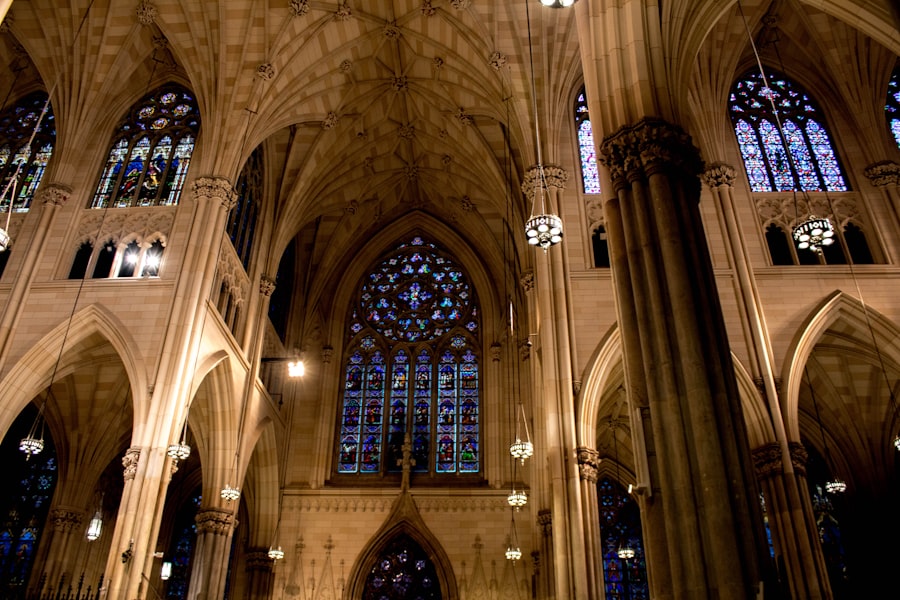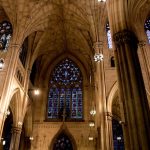Download links
How to install 8k8 Manila Cathedral: A Historic Landmark in the Heart of the Philippines APK?
1. Tap the downloaded 8k8 Manila Cathedral: A Historic Landmark in the Heart of the Philippines APK file.
2. Touch install.
3. Follow the steps on the screen.
Description
The Manila Cathedral, officially known as the Cathedral-Basilica of the Immaculate Conception, has a rich and storied history that reflects the tumultuous past of the Philippines. Its origins can be traced back to 1581 when the first church was constructed on the site, serving as the seat of the Archdiocese of Manila. This initial structure was made of bamboo and nipa palm, a humble beginning that belied the cathedral’s future significance.
Over the centuries, the cathedral has undergone numerous reconstructions and renovations, each reflecting the architectural styles and cultural influences of its time. The original church was destroyed by fire in 1583, leading to a series of rebuilds that would see the structure evolve dramatically. The cathedral has faced numerous challenges throughout its history, including natural disasters and wartime destruction.
The most significant of these events occurred during World War II when the cathedral was heavily bombed in 1945, resulting in its near-total destruction. This devastation marked a pivotal moment in its history, prompting a renewed commitment to restore the cathedral to its former glory. The post-war reconstruction, completed in 1958, was led by renowned architect Fernando Ocampo, who incorporated modern design elements while respecting the cathedral’s historical roots.
This blend of old and new has made the Manila Cathedral a symbol of resilience and faith for the Filipino people.
Key Takeaways
- Manila Cathedral was first built in 1571 and has since undergone several reconstructions due to natural disasters and war.
- The architectural design of Manila Cathedral features a combination of Neo-Romanesque and Neo-Byzantine styles, with intricate details and ornate decorations.
- The cathedral has been the site of significant events such as the visit of Pope John Paul II and the canonization of Filipino saints, as well as functions like state funerals and national celebrations.
- Restoration and preservation efforts have been ongoing to maintain the historical and cultural significance of Manila Cathedral, including the reconstruction of damaged parts and the installation of modern facilities.
- Manila Cathedral holds religious significance as the seat of the Archbishop of Manila and is a symbol of the country’s strong Catholic heritage, making it a popular destination for tourists and pilgrims.
Architectural Design and Features
The Exterior Façade
The current structure boasts a grand neo-Romanesque façade, characterized by massive arches and intricate details. The use of reinforced concrete in its construction has allowed for a more robust structure that can withstand the test of time and natural calamities.
The Interior Design
Inside, the cathedral is equally captivating, with high vaulted ceilings that create an atmosphere of grandeur. The stained glass windows filter sunlight into a kaleidoscope of colors that dance across the interior. The altar is a masterpiece in itself, featuring a stunning retablo that showcases various saints and biblical scenes. The use of local materials, such as narra wood for the pews and flooring, adds a unique Filipino touch to the overall design.
The Chapels and Spiritual Significance
The cathedral houses several chapels dedicated to different saints, each with its own distinct artistic elements and devotional significance. These features not only enhance the aesthetic appeal of the cathedral but also serve as a reminder of its spiritual purpose.
Significant Events and Functions

Throughout its history, Manila Cathedral has been the site of numerous significant events that have shaped both religious and national identity in the Philippines. As the principal church of the Archdiocese of Manila, it serves as the venue for important liturgical celebrations, including ordinations, confirmations, and major feast days. One of the most notable events is the annual celebration of the Feast of the Immaculate Conception, which draws thousands of devotees who come to pay homage to the Virgin Mary.
This event highlights the deep-rooted Catholic faith in Filipino culture and showcases the vibrant traditions associated with it. In addition to religious ceremonies, Manila Cathedral has also played a crucial role in historical events that have influenced the nation’s trajectory. For instance, it served as a gathering place during significant political movements, including those advocating for independence from colonial rule.
The cathedral has witnessed countless weddings, funerals, and other life milestones for generations of Filipinos, making it an integral part of their personal histories. Its walls have absorbed not only prayers but also hopes and dreams, making it a living testament to the Filipino spirit. Source: Wikipedia
Restoration and Preservation Efforts
| Effort | Metrics |
|---|---|
| Restoration Projects | Number of projects completed |
| Preservation Initiatives | Amount of historical sites preserved |
| Community Involvement | Number of volunteers engaged |
| Resource Allocation | Investment in restoration and preservation |
The restoration and preservation efforts surrounding Manila Cathedral are vital to maintaining its historical integrity and cultural significance. Following its destruction during World War II, extensive efforts were made to restore the cathedral to its former glory. The post-war reconstruction was not merely about rebuilding; it involved careful consideration of historical accuracy and architectural fidelity.
The use of modern materials was balanced with traditional techniques to ensure that the new structure would endure while honoring its past. In recent years, ongoing preservation initiatives have focused on maintaining both the exterior and interior elements of the cathedral. These efforts include regular maintenance checks on structural integrity, restoration of artworks, and conservation of stained glass windows.
The Archdiocese of Manila has also engaged with local artisans and craftsmen to ensure that restoration work adheres to traditional methods wherever possible. This commitment to preservation not only safeguards the physical structure but also fosters a deeper appreciation for its historical and cultural value among visitors and locals alike.
Religious and Cultural Significance
Manila Cathedral holds profound religious significance for Catholics in the Philippines and beyond. As one of the oldest cathedrals in Asia, it serves as a spiritual beacon for millions who seek solace and guidance within its walls. The cathedral is not just a place for worship; it embodies the collective faith and devotion of a nation deeply rooted in Catholicism.
Its status as a basilica elevates its importance within the Catholic Church hierarchy, making it a site for papal visits and other significant ecclesiastical events. Culturally, Manila Cathedral is intertwined with Filipino identity. It stands as a symbol of resilience against colonial oppression and natural disasters alike.
The cathedral has become a focal point for national celebrations, such as Independence Day and other civic events that highlight Filipino heritage. Its presence in Intramuros—a historic district that represents Manila’s colonial past—further emphasizes its role as a cultural landmark.
Visiting Manila Cathedral: What to Expect

Guided Tours and Historical Insights
Guided tours are available for those interested in delving deeper into its history and architectural features; knowledgeable guides provide insights into various aspects of the cathedral’s design and significance.
A Serene Ambiance and Intimate Spaces
Inside, visitors can expect to be captivated by the serene ambiance created by soft lighting filtering through stained glass windows. The interior is spacious yet intimate, allowing for quiet reflection or prayer amidst bustling city life outside. Various chapels dedicated to different saints offer unique spaces for personal devotion or contemplation.
A Lasting Impression and Souvenirs
Additionally, gift shops located nearby provide an opportunity to purchase religious artifacts or souvenirs that commemorate this iconic landmark. Whether one is seeking spiritual solace or simply appreciating architectural beauty, Manila Cathedral promises an unforgettable experience steeped in history and faith.
If you’re interested in exploring more fun activities, you should check out this article on exciting online games to pass the time. It offers a variety of engaging options to keep you entertained and challenged. Whether you’re into fishing games or other virtual adventures, there’s something for everyone to enjoy. So why not give it a try and discover a new way to have fun!
FAQs
What is the 8k8 Manila Cathedral?
The 8k8 Manila Cathedral is an article that discusses the historical and architectural significance of the Manila Cathedral, a prominent landmark in the Philippines.
Where is the Manila Cathedral located?
The Manila Cathedral is located in the Intramuros district of Manila, the capital city of the Philippines.
What is the historical significance of the Manila Cathedral?
The Manila Cathedral has a rich history dating back to the Spanish colonial period in the Philippines. It has been rebuilt several times due to natural disasters and wartime destruction.
What is the architectural style of the Manila Cathedral?
The Manila Cathedral features a combination of architectural styles, including Baroque, Neo-Romanesque, and Neo-Byzantine elements.
Is the Manila Cathedral open to the public?
Yes, the Manila Cathedral is open to the public for worship, guided tours, and special events.
What are some notable features of the Manila Cathedral?
Notable features of the Manila Cathedral include its ornate interior, stained glass windows, and the historic artwork and artifacts housed within the cathedral.
Is the Manila Cathedral a popular tourist attraction?
Yes, the Manila Cathedral is a popular tourist attraction due to its historical significance, architectural beauty, and religious importance.
Are there any ongoing restoration or preservation efforts for the Manila Cathedral?
Yes, there have been ongoing restoration and preservation efforts to maintain the structural integrity and historical significance of the Manila Cathedral.





